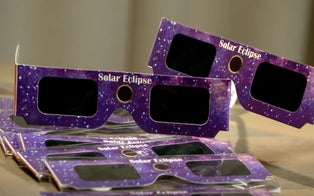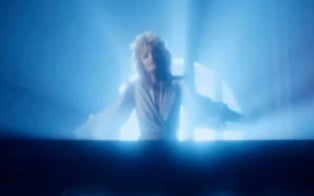The ruby is known as the king of gemstones, symbolizing passion, love and strength. It's no wonder people pay big bucks to buy ruby rings and other jewelry, but are you always getting genuine rubies? Inside Edition went ruby shopping and yo
Radiant ruby jewelry - to the naked eye, they are exquisite. But put some of the rubies under a microscope and it’s a different story – you can clearly see bubbles and that's a big problem for consumers, according to Master Appraiser Gary Smith. “That's trapped air inside the lead glass. You'll never find it in a natural ruby.”
That’s right, he said “lead glass.” Smith and other gemologists tell INSIDE EDITION that many of the rubies sold at some major stores should not even be called genuine rubies. They're more like ruby-ringers, consisting of some low-quality ruby and a lot of something called lead glass, which is infused into the stones to enhance their appearance.
“Call it by any other name, a composite ruby, a manufactured product, a fake, an imitation. Call it anything you want, except genuine ruby,” explains gemologist Antoinette Matlins.
So INSIDE EDITION went jewelry shopping to see if retailers where really selling composite lead-glass rubies as genuine.
Zales is one of America's largest national jewelry chains. Here's what they told us at their shop in midtown Manhattan when our producer asked, “Is that a real ruby?”
“Yes, it's genuine,” said the salesperson.
We were given the same information when we went shopping at Lord & Taylor's flagship location on Manhattan's famed Fifth Avenue. We were assured the ruby ring was the real deal.
“It's a real ruby?” asked our producer.
“Yeah, it's a real ruby. It's very elegant. You can see the ruby itself,” said the salesperson.
But are they, really? We made the purchases and then sent the rings to Christopher Smith at American Gemological Labs for a battery of tests. He says they've all been infused with high amounts of lead glass
“This glass actually has quite a high content of lead,” said Smith. “All of them were of this composite ruby material.”
“I am so angry about the failure to disclose what this product really is, let alone the price,” said Matlins.
The ruby ring we purchased at Zales cost us almost $2,000.
“I'm just blown away,” said Gary Smith. “I can't fathom that kind of pricing on a piece like this. This should retail around $415 dollars to about $625.”
And we saw what happened when they got dropped into a simple jeweler’s cleaning solution. After a few minutes, the lead glass is eaten away.
“It's all white, honeycombed. Totally destroyed,” Smith noted. “Now, it's less than worthless.”
Unlike these lead-glass rubies, real rubies are so durable they emerge from a cleaning in beautiful condition.
Gary said, “If I gave one of these to my wife, I would probably be sleeping on the sofa and cooking my own meals for a couple of weeks.”
In a statement, Zales claims the jewelry was mislabeled and will now be retagged as “manufactured ruby," but they maintain the ring INSIDE EDITION purchased was priced fairly. Lord & Taylor’s told us they are investigating. Both companies will offer refunds to unsatisfied customers.






